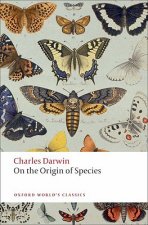
Code: 02177522
Nekton
by Yu.G. Aleyev
1. Nekton as an ecomorphological type of biont The term nekton was suggested and used for the first time in 1890 by E. Haeckel in his book Plankton-Studien. Etymologically the word nekton derives from the Greek VTJKTTJP, i.e. swim ... more
- Language:
 English
English - Binding: Paperback
- Number of pages: 441
Publisher: Springer, 2012
- More about this

115.42 €

Low in stock at our supplier
Shipping in 10 - 14 days
Potřebujete více kusů?Máte-li zájem o více kusů, prověřte, prosím, nejprve dostupnost titulu na naši zákaznické podpoře.
Add to wishlist
You might also like
-

Nekton
135.65 € -

Když se pedig stane koníčkem
5.12 € -23 %
Give this book as a present today
- Order book and choose Gift Order.
- We will send you book gift voucher at once. You can give it out to anyone.
- Book will be send to donee, nothing more to care about.
More about Nekton
You get 290 loyalty points
 Book synopsis
Book synopsis
1. Nekton as an ecomorphological type of biont The term nekton was suggested and used for the first time in 1890 by E. Haeckel in his book Plankton-Studien. Etymologically the word nekton derives from the Greek VTJKTTJP, i.e. swimming. As Haeckel defined it, nekton describes collectively all swimming animals that are 'free to choose their path', i.e. can resist a strong current of water and, distinct from planktonic animals, go where they wish. While giving a general idea of the dividing line between plankton and nekton, Haeckel's definition, which has played an important role in shaping our ideas about nekton, today no longer provides a sufficient basis for ecological and functional morphological investigations, since it affords no possibility of quantitatively assessing either the boundary between plankton and nekton or that between nekton and other ecomorphological types of biont. Thus Parin (1968), proceeding from Haeckel's principle, believes that in the epipelagic zone of the ocean the minimum size of nektonic fishes with a well-developed capacity for active swimming may be between 15 and 30 cm, as fishes shorter than 15 cm are unable to counter oceanic currents. Meanwhile young Leucaspius (Leucaspius delineatus) only 1.5 cm long, observed by this writer in ponds near Moscow proved capable of active horizontal migrations across the entire body of water, which, if Haeckel's definition is accepted, brings the border between planktonic and nektonic fish in this case to between 1.5 and 2.0 cm.
 Book details
Book details
Book category Books in English Mathematics & science Biology, life sciences Life sciences: general issues
115.42 €
- Full title: Nekton
- Author: Yu.G. Aleyev
- Language:
 English
English - Binding: Paperback
- Number of pages: 441
- EAN: 9789401013260
- ISBN: 9401013268
- ID: 02177522
- Publisher: Springer
- Weight: 646 g
- Dimensions: 229 × 152 × 24 mm
- Date of publishing: 04. January 2012
Trending among others
-

The Selfish Gene
11.06 € -25 % -

The Molecule of More
15.79 € -25 % -

Stealing Fire
11.26 € -28 % -

Greatest Show on Earth
11.26 € -21 % -

Incognito
10.86 € -26 % -

Idiot Brain
12.17 € -17 % -

We Are Our Brains
11.46 € -19 % -

Happy Brain
11.36 € -22 % -

Hidden History of the Human Race
13.68 € -19 % -

Brain
11.76 € -20 % -

Brain Book
23.54 € -16 % -

Ways of Attending
26.56 € -

Undoing Project
11.06 € -12 % -

Cosmic Serpent
10.36 € -27 % -

Sapiens
21.43 € -

Into the Magic Shop
13.78 € -28 % -

Homo Deus
11.36 € -20 % -

The Extended Phenotype
12.27 € -28 % -

Speculations on the Evolution of Human Intelligence
7.44 € -28 % -

Neuroaffective Picture Book 2
35.72 € -

It Was Snowing Butterflies
3.41 € -26 % -

Beautiful Brain
34.01 € -22 % -

The Story of the Human Body
14.38 € -22 % -

Psychopath Inside
16.90 € -16 % -

Homo Deus
31.89 € -

Story Genius
13.88 € -23 % -

Reaching Down the Rabbit Hole
10.36 € -29 % -

On the Origin of Species
9.35 € -24 % -

Conscious Mind
21.12 € -16 % -

Evolution
22.23 € -27 % -

Vital Dust
32.50 € -

Cradle of Humanity
27.06 € -9 % -

Sapiens
35.82 € -3 % -

Anatomy Flash Cards
19.61 € -24 % -

Monkeyluv
11.26 € -28 % -

Pocket Guide to the Polyvagal Theory
37.63 € -

How Babies Think
11.16 € -22 % -

Expanding Circle
16.49 € -13 % -

Consciousness and the Social Brain
23.54 € -12 % -

New Executive Brain
21.63 € -19 % -

Book of Beautiful Questions
21.43 € -25 % -

Hidden Spring
13.88 € -19 % -

Moral Origins
30.89 € -15 % -

Megaherbivores
89.86 € -

Brain from Inside Out
91.97 € -

Forgetting Machine
11.97 € -26 % -

Innovations in Cardio-Oncology
177.31 € -

Micro-, Meso- and Macro-Dynamics of the Brain
63.69 € -

Monkey's Voyage
21.43 € -25 %
Collection points Bratislava a 2642 dalších
Copyright ©2008-24 najlacnejsie-knihy.sk All rights reservedPrivacyCookies


 15549 collection points
15549 collection points Delivery 2.99 €
Delivery 2.99 € 02/210 210 99 (8-15.30h)
02/210 210 99 (8-15.30h)